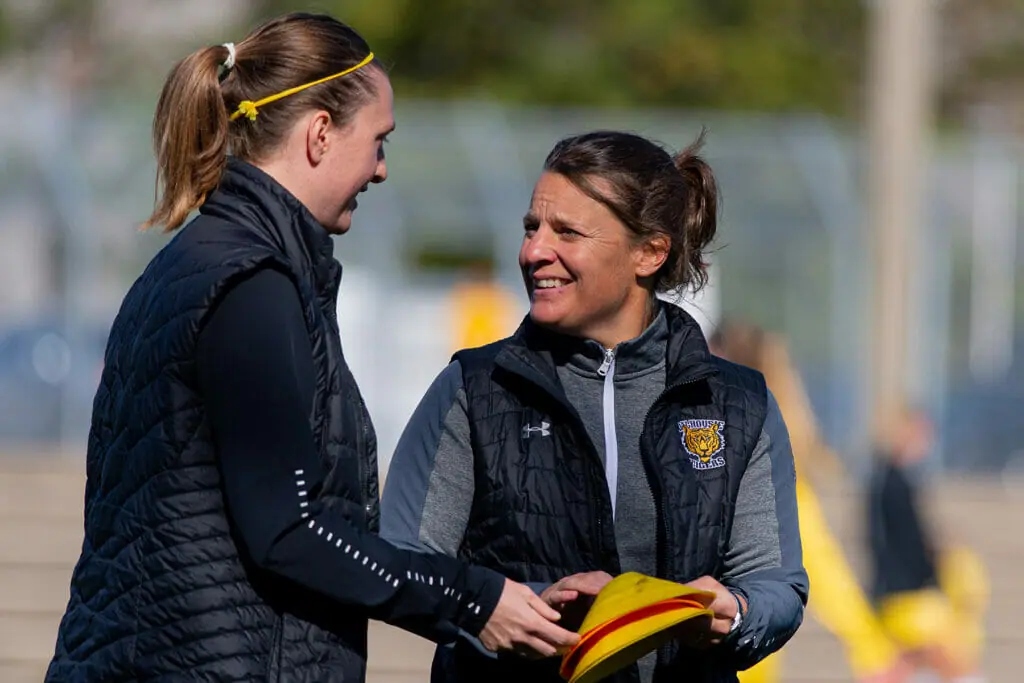
Every year, coaches are tasked with finding ways to get the best out of their athletes. Coaching through the COVID-19 pandemic at Dalhousie University has presented several challenges to that mission.
Many coaches felt coaching this year was tougher without many games being played. Some Nova Scotia universities, including Dal, began playing some exhibition games in early February 2021. But then new provincial COVID-19 restrictions, announced on Feb. 26, shut down games again.
Anna Stammberger, coach of the Dal women’s basketball team, said it was harder as a coach to see fewer games being played.
“For both coaches and players, the games are the really fun part. They also serve to measure where you are,” said Stammberger.
With the lack of games to assess his team Rick Scott, Dalhousie’s women’s volleyball coach, echoed these observations:
“That was more of a challenge than previous years for the athletes to stay engaged and also for the coaches. The coaches and I had to be creative to keep them interested and engaged,” Scott said.
Finding motivation

Getting ready for the next game is normally a team’s main source of motivation and providing alternatives became one of the greater challenges of coaching during the pandemic. Cindy Tye, Dalhousie women’s soccer head coach, said her team found motivation harder to find.
“There are no games and you had to find different sources of motivation for [the players]. The biggest thing for us was working to get a little bit better every day no matter what and being consistent in the approach to training,” said Tye. “They’ve gone through depths of wanting that competition piece and we’ve tried to build it in in other ways, but that’s very difficult to replicate.”
Like soccer, swimmers have found motivation hard to come by without any in-person swim meets.
“There are some athletes that do this because they love racing. Swim training is hard. It’s tedious and it’s repetitive. It’s staring at the bottom of the pool for two to four hours a day,” Tigers swimming coach Lance Cansdale said. “If you’re not getting your reward [swim meet] every once a month and seeing your competition, it’s a tough slog.”
One problem Cansdale faced was with recruiting. He had to adjust his scouting methods since he couldn’t watch any high school swimmers in action.
“When they don’t have opportunities to train consistently and to race consistently, you’re having to go back to Grade 11 and try to predict [potential recruits] a little bit more,” said Cansdale.
Without games, coaches have to think outside the box sometimes to keep players intrigued and engaged.
“You always need to be able to adapt to your circumstances,” Scott said. “There were a lot of things that I do the same. But there were some adaptations in terms of maybe training once less a week or doing some funner activities. We had games like a badminton tournament in practice to keep their spirits up and to keep them having fun. It’s about preventing burnout, and helping them keep mentally healthy and emotionally healthy.”
Making the most of time together
Team bonding suffered during COVID-19, with gathering limits in the way of larger and more frequent team events.
“They can’t meet as a group over generally 10 people. Those were the restrictions for a lot of the year. So that makes it more of a challenge,” Scott said. “At the same time, I think they did a good job doing what they could and to have some of that bonding take place where we can or in small groups as well.”
Stammberger said her team also had to find other ways to bond.
“I think they bonded more. And maybe that’s why they were so happy to be at practice, as the only place that we could be together as a team,” she said. “Maybe they were enjoying practices and working hard at practice.”
Even with restrictions, coaches felt their teams were able to build a bond. For some teams, the bond is even stronger compared to other years. Tye said the team was fortunate for the bonding opportunities they got.
“We probably were more connected than we’ve ever been because we started in the summer on Zoom. Then we had 100 per cent of our kids here in Halifax and a lot of them isolated for two weeks twice, in the fall and in the winter,” said Tye. “But within all the restrictions, we’ve been training five or six days a week since September, so we may be even more connected than we were before.”


Recent Comments